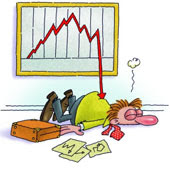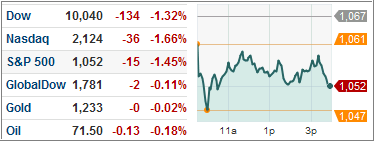The M-Index rankings featured in my weekly StatSheet provide assistance in making proper fund/ETF selections when buy signals are being generated.
The best time to utilize the ranking system is at the beginning of a buy cycle, right after trend lines have been crossed to the upside. In other words, we are looking at bear market territory in the rear view mirror and therefore are approaching the trend lines from a level below.
In the context of the ranking food chain, reader John had this question:I want to make sure I am on the same page as you.
Assume I want in the market now and buy your top 6 M-rated funds/ETFs with a 7% trailing stop. Do I just continue to hold those till I either get stopped out or get a sell signal?
And when I get stopped out, do I then buy the top rated M-rated ETFs on your list as a replacement?
The short answer is yes and no. The current bull market, which started according to my trend tracking approach on 6/3/2009, is now some 15 months old. During this period, we have seen stunning rallies and tremendous market collapses.
More recently, economic news reports have been negative with the major indexes now hovering below their respective long-term trend lines, while our domestic Trend Tracking Index (TTI) still hovers in bullish territory by +2.01%.
In other words, our domestic TTI is now approaching its trend line from a level above and not from below. Sure, if you are an aggressive investor, you can pick some of the few domestic funds that are still ranked positive by the M-Index.
However, if you look at their respective positions, relative to their long-term trend lines (column %M/A), you’ll find that they are all in negative territory. That means, despite our domestic TTI still being bullish, the funds/ETFs listed in the StatSheet are predominantly bearish.
If you are looking to invest in this environment, the domestic market nor the international one, are not the areas to focus on. Sector and Country funds, along with bond ETFs, offer far better momentum numbers at this time.
Again, you need to be the aggressive type to establish a position right now. If you do, my suggestion is to always drop down the rankings by a few notches so that you don’t get stopped out unnecessarily. The higher the ranking, the higher the volatility! That is why I recommend the use of a 10% trailing stop loss for Country and Sector funds/ETFs.
If you get stopped out, you need to reevaluate as to what area, if any, momentum has shifted to. If momentum numbers approach zero, or are negative, this is not the time to try to be a hero and engage in bottom fishing. Wall Street is littered with bodies who were convinced that “the market simply can’t go any lower.”







